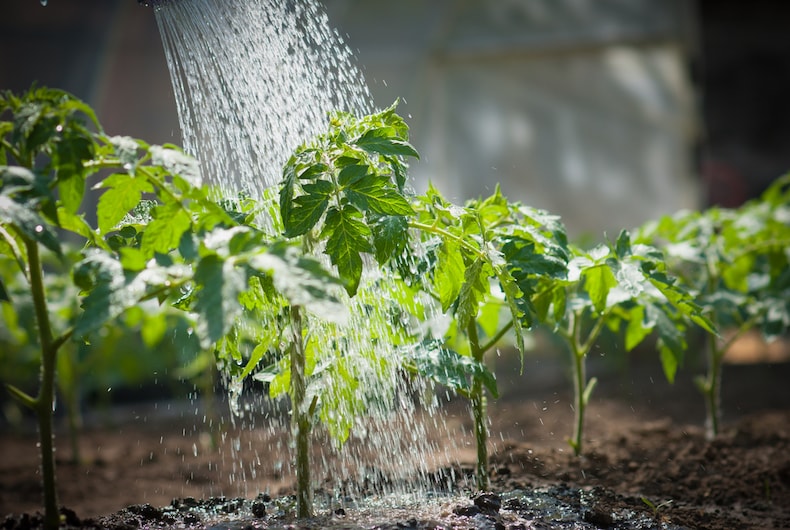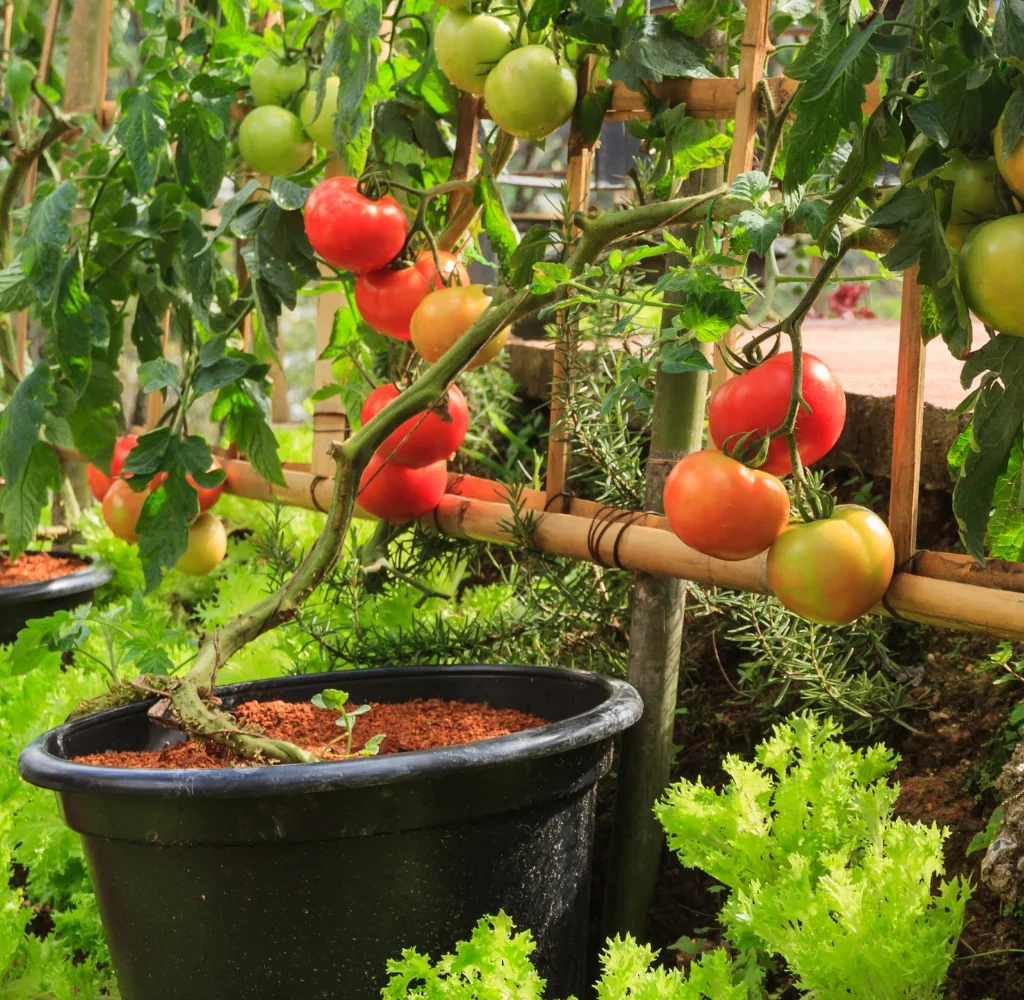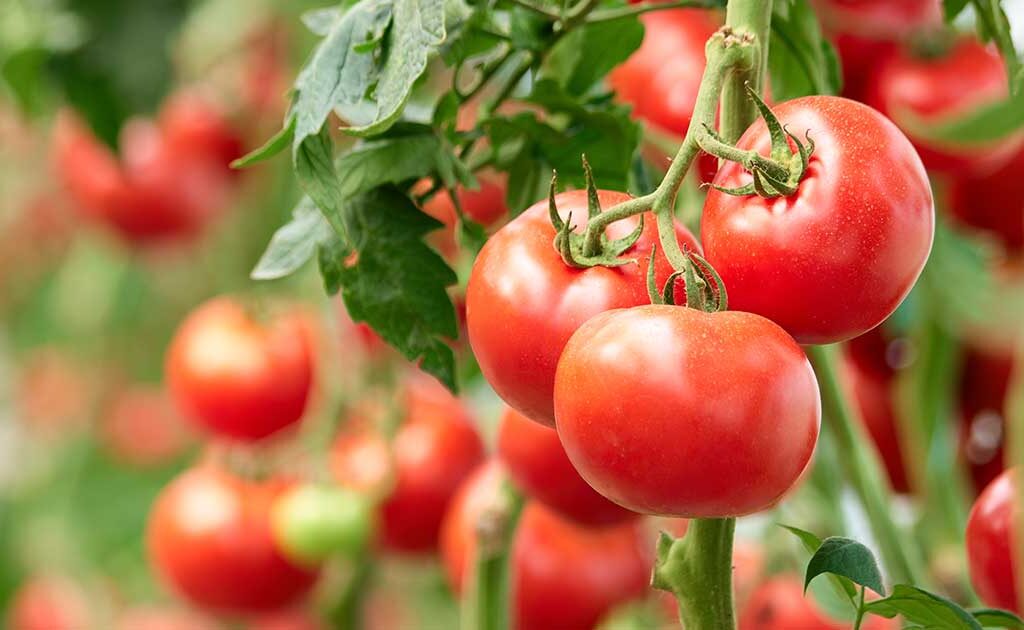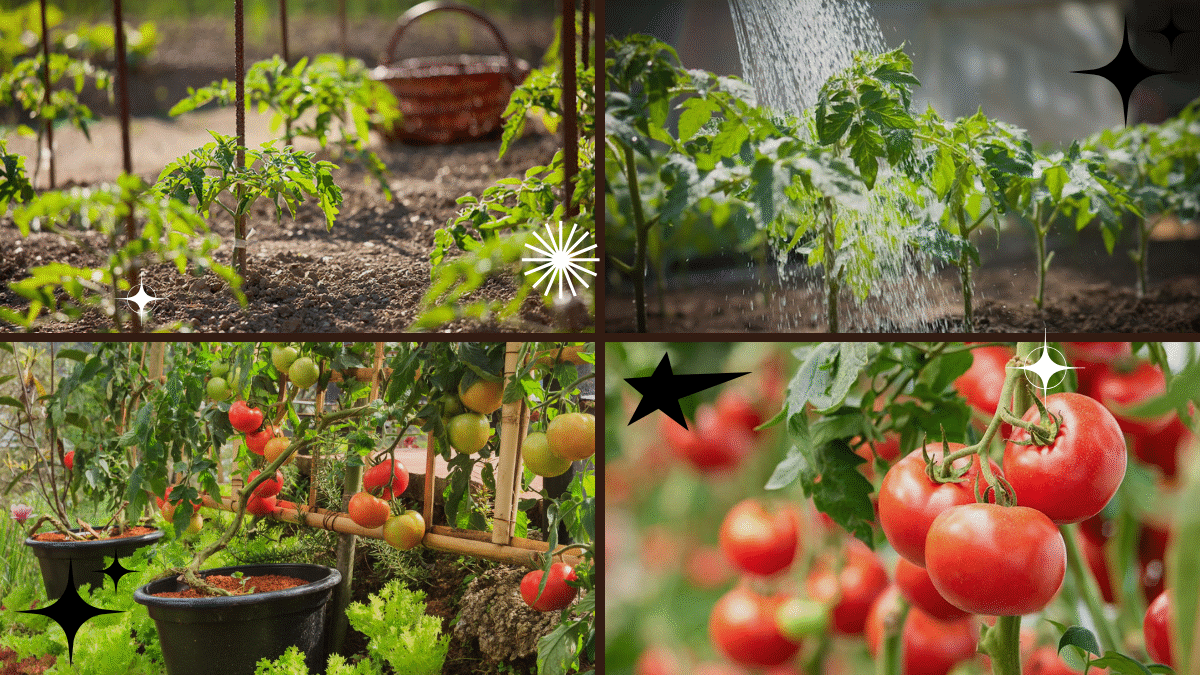Few things in life compare to the flavor of a homegrown, sun-ripened tomato. Whether you slice them for sandwiches, toss them into salads, or turn them into rich sauces, tomatoes are a beloved staple in both the garden and kitchen. Thankfully, growing them isn’t as complicated as some might think. With the right techniques and care, you can enjoy a thriving tomato harvest right in your backyard, patio, or balcony. This guide will walk you through everything you need to know about how to plant tomatoes for a flourishing, flavorful garden.

Why Grow Your Own Tomatoes?
Before we dive into the step-by-step planting guide, let’s take a moment to appreciate why growing your own tomatoes is such a smart idea:
- Unmatched Flavor: Homegrown tomatoes taste fresher, sweeter, and more vibrant than store-bought varieties.
- Wide Variety: When growing your own, you can choose from dozens of unique heirloom and hybrid options.
- Health Benefits: Tomatoes are rich in antioxidants like lycopene, along with vitamins C and K, folate, and potassium.
- Cost-Effective: A single tomato plant can yield dozens of fruits in a season, saving money on groceries.
Choosing the Right Tomato Variety
Tomatoes come in a wide range of shapes, sizes, and colors. Picking the right variety for your climate, garden size, and taste preference is key to success.
1. Determinate (Bush) Tomatoes
- Grow to a fixed height (about 3-4 feet)
- Produce one large crop, typically over 2-3 weeks
- Ideal for containers, small spaces, and canning
Popular Varieties: ‘Roma’, ‘Celebrity’, ‘Bush Early Girl’
2. Indeterminate (Vining) Tomatoes
- Continue to grow and produce fruit throughout the season until frost
- Require staking or caging for support
- Great for gardeners who want a continuous harvest
Popular Varieties: ‘Brandywine’, ‘Cherokee Purple’, ‘Sun Gold’, ‘Beefsteak’

When to Plant Tomatoes
Tomatoes are warm-season crops that thrive when soil temperatures stay consistently above 60°F (16°C). In most regions:
- Start seeds indoors: 6-8 weeks before the last expected frost date
- Transplant outdoors: 1-2 weeks after the last frost, when daytime temperatures stay above 65°F (18°C)
Preparing the Garden Site
Tomatoes crave warmth, sunlight, and nutrient-rich soil. The better you prepare your planting area, the healthier your plants and harvest will be.
Ideal Conditions:
- Sunlight: At least 6-8 hours of direct sunlight daily
- Soil: Well-draining, loamy soil with a pH between 6.2 and 6.8
- Air Circulation: Good spacing and airflow prevent fungal issues
Soil Preparation:
- Loosen the soil to a depth of 12-18 inches.
- Mix in 2-4 inches of organic compost or well-rotted manure.
- Incorporate a balanced, slow-release fertilizer or tomato-specific fertilizer into the topsoil.

How to Plant Tomatoes Step by Step
Materials Needed:
- Tomato seedlings or transplants
- Organic compost
- Mulch (straw, shredded leaves, or grass clippings)
- Fertilizer
- Tomato cages, stakes, or trellises
Planting Process:
- Harden Off Seedlings
- Gradually expose young plants to outdoor conditions over 7-10 days before transplanting.
- Dig Deep Holes
- Dig holes about 12 inches deep and 18-24 inches apart (more for indeterminate types).
- Space rows 3-4 feet apart for vining varieties.
- Add Compost and Fertilizer
- Mix a handful of compost and a spoonful of fertilizer into the bottom of each hole.
- Plant Deep
- Remove lower leaves and bury the plant so that only the top few sets of leaves remain above soil. Tomatoes develop roots along buried stems, resulting in stronger, more productive plants.
- Water Thoroughly
- Soak the soil around each plant immediately after planting.
Staking and Supporting Tomato Plants
Tomatoes need support to keep fruits off the ground and prevent diseases. Choose one of these methods:
- Stakes: Drive a 5-6 foot stake 12 inches into the ground next to each plant and tie the main stem to it as it grows.
- Cages: Surround plants with a sturdy tomato cage to support the plant naturally.
- Trellises: Ideal for indeterminate varieties in small spaces or raised beds.

Mulching and Watering
Mulching
- Apply a 2-3 inch layer of organic mulch around plants.
- Retains soil moisture, suppresses weeds, and regulates soil temperature.
Watering
- Keep soil consistently moist but not soggy.
- Tomatoes need about 1-1.5 inches of water per week.
- Water at the base to avoid wetting leaves, reducing the risk of fungal diseases.
Fertilizing Tomato Plants
- Use a balanced fertilizer (10-10-10) when planting.
- Once fruits set, switch to a fertilizer higher in phosphorus and potassium to promote fruiting.
- Avoid excessive nitrogen, which promotes foliage over fruit production.
Common Tomato Pests and Diseases
Pests:
- Tomato Hornworms: Large green caterpillars that can defoliate plants; handpick or use Bacillus thuringiensis (Bt) sprays.
- Aphids: Spray with neem oil or insecticidal soap.
- Whiteflies: Use yellow sticky traps and neem oil.
Diseases:
- Blossom End Rot: Caused by calcium deficiency; maintain consistent watering and add calcium if needed.
- Early Blight: Remove affected leaves, improve airflow, and use fungicidal sprays if necessary.
- Powdery Mildew: Prevent with good spacing, pruning, and organic fungicides.
Pruning Tomato Plants
Pruning helps increase airflow and directs energy into fruit production.
- Remove Suckers: Pinch off small shoots that grow in the joint between a leaf and the main stem.
- Lower Leaves: Remove leaves touching the ground to reduce disease risk.
Harvesting Tomatoes
- Pick tomatoes when they are fully colored and slightly soft to the touch.
- Indeterminate varieties can be harvested continuously until frost.
- Store ripe tomatoes at room temperature for best flavor.
Conclusion
Planting tomatoes is a rewarding and simple way to bring fresh, flavorful produce into your life. By selecting the right variety, planting deeply, providing support, and maintaining consistent care, you can enjoy a bountiful harvest of homegrown tomatoes all season long. Whether you’re an experienced gardener or just getting started, following these tips will set you on the path to a thriving, vibrant tomato garden.
So grab those seeds or seedlings, roll up your sleeves, and get planting — your future harvest of juicy, garden-fresh tomatoes awaits!





Leave A Comment